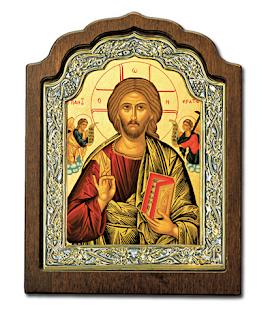Byzantine art after a 6-7 century AD prosperity, from the beginning of the 8th century to the mid-ninth century AD, caught in a long dark age, which is dominated by the country at the time of religious and cultural life iconoclasm caused. During this period, the entire religious art suffered a disaster. Previous era of religious themes of art chant mercilessly destroyed. Frescoes and mosaics are shovel down from the wall, iconostasis were burned. Jun Fort of Our Lady of Vladimir hum all ancient iconostasis were destroyed, the chapel walls were painted new murals.
In the letter of Saint Stephen, a biography about this event wrote: "Christ, the Virgin and Saints icons chant burning and destruction: on the contrary, trees, birds, animals, and as such ferocious gallop hunting scene , theater and the racecourse and other images, were carefully preserved ... and your church into a garden aviary
It is said that the Byzantine emperor Shi Jun but had ordered to replace the church wall murals depicting the Great Society into six portraits of Auriga their loved ones
But Christian art in this dark period has not completely disappeared, but the continued existence of the regime and the state power away from the religious places. In the monastery's remote areas (such as in Cappadocia or the Crimea), the faithful still as before in front of icons in prayer, for this is also another secret of painting icons.
Orthodox icon is a different from other art forms of religious art. Russian Orthodox theologian Bulgakov said: "Power Dekor is a special kind of church tradition, but he was not verbal and writing, but in color and image reflect Therefore, Dekor themes and methods. to follow the tradition of the Church, which determines its content, meaning and form. icons of religious works of art, rather than "art for art" works
Since the icon is not self-sufficient sense of art, but belong to the Orthodox Church theology and worship, therefore, the characteristics associated with it, the basic idea is not as an independent art form of icon art history book.
This book is a symbol of Orthodox icons in this particular form of religious history occur, theological sense, the performance of the method, the basic type and narration in major countries such as the historical development of the overall structure into three parts, the first part is about the early Christian art form, the doctrine of the Orthodox iconostasis and icons surplus establish general methods and characteristics: the second part is the age of the various types of icons are described: the third part is the Byzantine, Greek and Russian icons of art history development a brief description.

没有评论:
发表评论